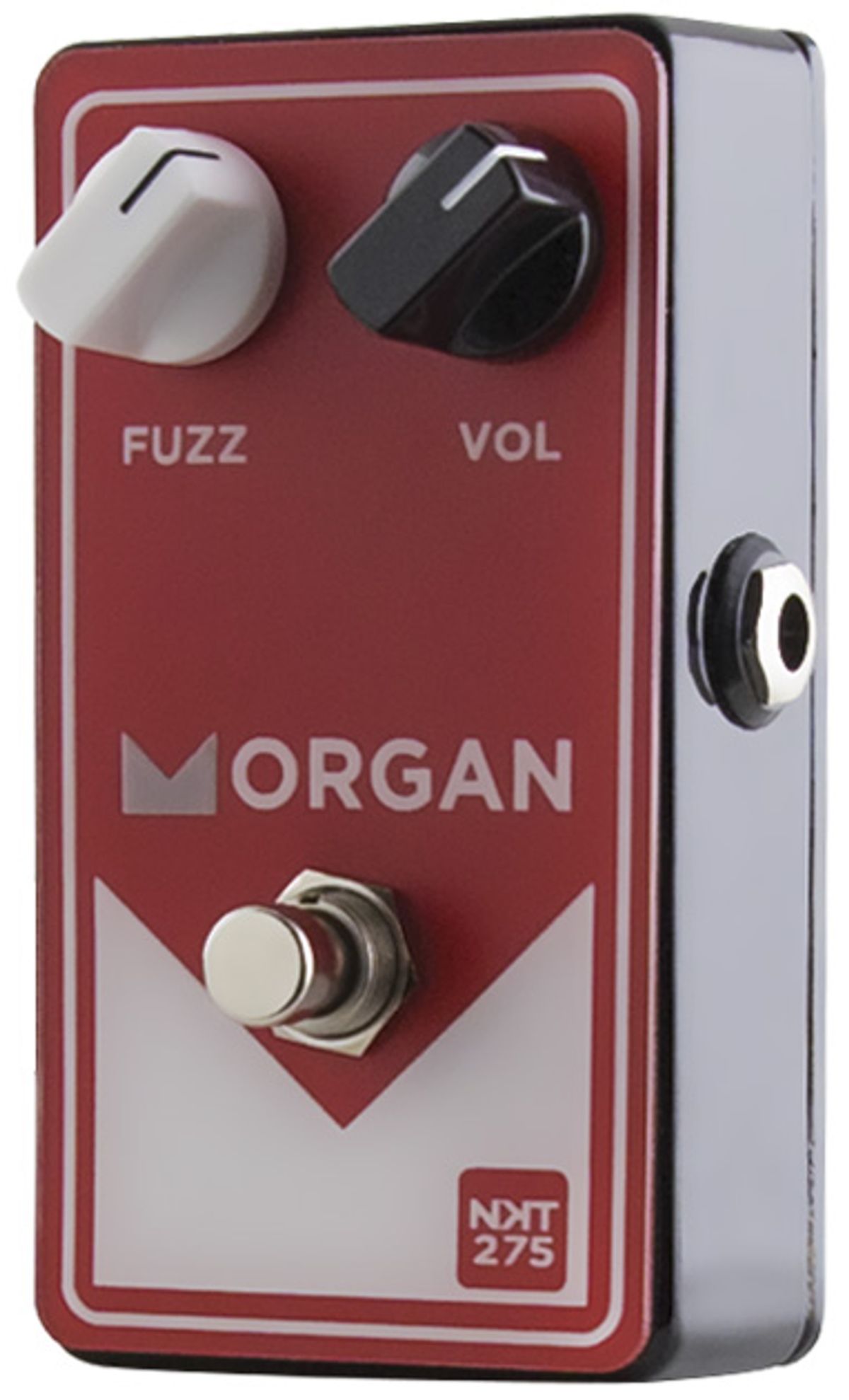
New old-stock germanium makes this Fuzz Face clone sing.
[Editor's note: The original version of this review—and the associated ratings—were based on the assumption that the pedal’s transistors were, in fact, authentic new-old-stock Newmarket NKT275 components. Presently, we cannot verify, either through conversations with Joe Morgan himself or the transistor supplier, that the components in question are genuine Newmarket-branded NKT275s. While we found that the pedal sounds superb regardless of transistor type or pedigree, we lowered the Value rating to reflect the potential use of a less rare and less valuable transistor type. In doing so, this put the pedal’s cumulative rating below the threshold required to receive our Premier Gear award.]
On certain days, a good germanium Fuzz Face or Fuzz Face clone can make you want to throw every pedal you own out the window. Built right, they’ll deliver scathing-to-singing fuzz, rich overdrive sounds, and sparkling near-clean tones—all with a little twist of the volume knob on your guitar.
The Morgan NKT275 is an excellent germanium Fuzz Face clone. That means lots of the dynamic interactivity that marks a great original Fuzz Face, plus a little unique coloration that both Fuzz Face traditionalists and players new to the circuit can dig.
Fit for Fatness
There’s not much to see if you open up the back of the Morgan. The circuit board is flipped over, concealing the transistors at the heart of the pedal along with the other components (which are few in a Fuzz Face-style pedal). The pedal feels exceptionally sturdy, though, and extra-effort design and construction measures are evident in the enclosure-mounted jacks and clean solders. The Morgan can be powered by a 9V battery or an AC adapter.
The Morgan NKT275—or rather, this particular Morgan NKT275 (germanium transistors often exhibit minor but noticeably different sonic qualities)—is slightly on the darker side of the germanium Fuzz Face spectrum. This is no bad thing. For starters, the duskier voice has a slight mellowing effect on classic, Fuzz Face-associated setups like Stratocasters and EL34 and EL84 amps. It also broadens the range of colors you can extract just by changing the relationship of fuzz and volume controls on the pedal, and the tone controls on your amp and guitar.
Ratings
Pros:
Dazzling dynamics. Tough, high-quality build. Big, full-spectrum fuzz sounds.
Cons:
None
Tones:
Ease of Use:
Build/Design:
Value:
Street:
$199
Morgan Pedals NKT275 Fuzz
morganamps.com
Legendary Fuzz
Morgan lives up to many Fuzz Face legends, but it dispels others—and in very welcome ways. That myth you always heard about Fuzz Faces only sounding right at maximum fuzz and volume? Well, with those same controls at noon, the Morgan sounds tough, fat, and even a bit civilized. Using a ’68 Bassman and a Stratocaster at these settings, the darker tonality is easy to hear. It may not be an ideal setting for a dense, loud band mix, but it’s a killer fuzz voice for chugging rhythm parts and Cream-style riffs—especially when doubling or harmonizing with a bass.
Notch both controls up to about 2 o’clock and the harmonic picture widens. You hear and feel more high-mid presence, and guitar volume dynamics are more expansive. Wide-open single-coils and humbuckers at these settings generate fuzzy, growling, but detailed chord images. Yet it only takes a little guitar volume attenuation to move from fuzzy to full-spectrum overdrive sounds. Easing back another notch or so yields a burlier and slightly compressed version of the amp’s clean tone. I’d also venture that it made my silverface Bassman feel a lot more like a tweed one.
Players who insist that full-throttle is the only way to run a germanium Fuzz Face-style pedal will feel vindicated knowing that the Morgan sounds thrilling with both controls at maximum. Chords clearly reveal constituent notes and show off a tough, complex excitability in the low-mid range. Lead tones from the treble strings are crystalline and searing, and sweetly fuzzy on the thicker strings. Both sounds are intoxicating with a spot of analog delay (circa ’70 Gilmour fans take note).
The Verdict
Though there are just two knobs on the Morgan NKT275, you’ll be knocked out by the many colors you can extract from a few different settings, your amp, and your guitar. If you’re crafty, the Morgan can stand in for a fuzz, overdrive, and clean boost—saving cash and floor space. The old-school approaches to dynamics enabled by the Morgan NKT275 are not for every player. But Morgan deserves heaps of praise for building a germanium fuzz that’s dynamic enough to make such experiments a possibility.

